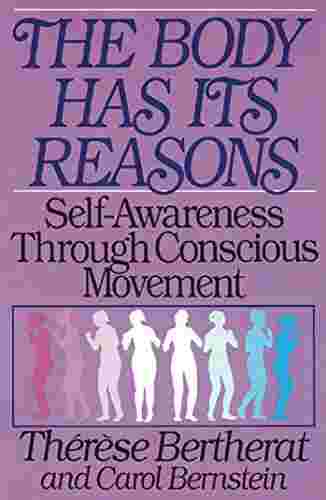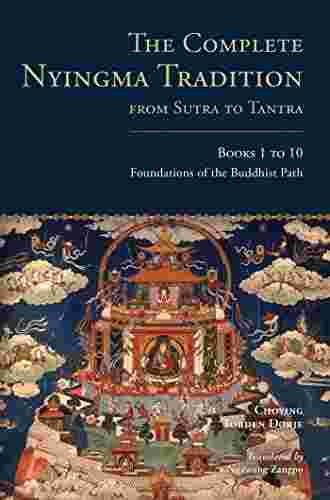Do you want to contribute by writing guest posts on this blog?
Please contact us and send us a resume of previous articles that you have written.
The Inner Science Of Buddhist Practice: Discovering the Path to Enlightenment

For centuries, Buddhist philosophy and practices have fascinated spiritual seekers around the world. Behind the serene exterior lies a rich tapestry of inner science that unveils the secrets to true human transformation. This article delves into the depths of Buddhist practice, exploring the profound wisdom and techniques that have the power to unlock the doors of enlightenment.
The Essence of Buddhist Practice
Buddhist practice is not confined to a set of rituals or beliefs; rather, it is a journey of inner discovery. By delving into the depths of one's own mind, Buddhist practitioners seek to liberate themselves from the cycle of suffering and find lasting peace and happiness.
At the heart of this practice lies the Four Noble Truths: the truth of suffering, the truth of the origin of suffering, the truth of the cessation of suffering, and the truth of the path to the cessation of suffering. These truths form the foundation of Buddhist teachings and guide practitioners on their quest for enlightenment.
4.9 out of 5
| Language | : | English |
| File size | : | 7453 KB |
| Text-to-Speech | : | Enabled |
| Enhanced typesetting | : | Enabled |
| Print length | : | 576 pages |
| Screen Reader | : | Supported |
The Power of Mindfulness
One of the fundamental practices in Buddhism is mindfulness. By cultivating present-moment awareness, individuals develop a deep understanding of their emotional and mental states. This heightened awareness allows practitioners to break free from the grip of negative thoughts and emotions, leading to greater peace and clarity of mind.
The art of meditation plays a crucial role in developing mindfulness. Through concentration and introspection, individuals learn to observe their thoughts and emotions without judgment. This practice cultivates a sense of detachment, freeing the mind from the constant restlessness and distractions of everyday life.
Compassion: A Pillar of Buddhist Practice
Compassion lies at the heart of Buddhist teachings. The practice of loving-kindness and compassion towards oneself and others helps dissolve the barriers between individuals, fostering a strong sense of interconnectedness.
By transcending the ego and cultivating empathy, Buddhist practitioners become beacons of kindness and understanding. This deep sense of compassion not only brings joy and fulfillment to their own lives but radiates outwards, positively impacting the world around them.
Embracing Impermanence and Non-Attachment
The understanding of impermanence is a powerful aspect of Buddhist practice. The realization that all things, including our own existence, are in a constant state of change allows practitioners to embrace impermanence rather than fear it.
Through a process of non-attachment, individuals learn to let go of clinging to transient pleasures and avoid the suffering that arises from attachment to outcomes. This practice liberates practitioners from the never-ending cycle of desire and aversion, opening the door to true inner freedom.
Expanding Consciousness: The Practice of Wisdom
At the pinnacle of Buddhist practice lies the cultivation of wisdom. This refers to the direct realization and experiential understanding of the true nature of reality. By penetrating deep into the nature of existence, individuals gain insight into the interconnectedness and interdependence of all phenomena.
Wisdom allows practitioners to transcend limiting beliefs and perceptions, leading to a profound shift in consciousness. This shift brings forth a deep sense of liberation, as individuals awaken to the ultimate truth and perceive reality with clarity and equanimity.
The Inner Science of Buddhist Practice
Buddhist practice is not merely a collection of rituals or philosophical concepts. It is a profound inner science that offers practical tools for self-transformation and awakening. By integrating mindfulness, compassion, impermanence, and wisdom into their daily lives, practitioners embark on a transformative journey towards enlightenment.
So, whether you are new to Buddhism or have been practicing for years, delve deeper into the inner science of Buddhist practice. Unlock the secrets to true human transformation and experience the profound peace and liberation that await on the path to enlightenment.
4.9 out of 5
| Language | : | English |
| File size | : | 7453 KB |
| Text-to-Speech | : | Enabled |
| Enhanced typesetting | : | Enabled |
| Print length | : | 576 pages |
| Screen Reader | : | Supported |
The Inner Science of Buddhist Practice contains translations of texts by two historically important Indian Buddhist scholars: Vasubhandhu's "Summary of the Five Heaps" and Sthiramati's commentary on Vasubandhu's root text. These works present the traditional Buddhist analysis of ordinary experience and provide rich resources for studying Buddhist and Western interpretations of the psychology of spiritual development. According to Buddhist doctrine, the mind of an ordinary person even at birth holds deeply ingrained predispositions that lead us to perceive the elements of everyday experience mistakenly and to believe, for instance, that entities persist through time that the pleasures we pursue are genuinely satisfying, that our own personal being is governed by a real self, and that all physical and mental phenomena have a distinct, independent, and real essence. Our everyday language only serves to reinforce and deepen these erring notions. Buddhist teaching reveals how to reject these flawed beliefs and replace them with a model that both more accurately represents our experience and is indispensable to the realizations that will free us from cyclic existence. The ability to accomplish this rests largely with learning the unique vocabulary and explanations found in Buddhist literature, since that is how we will discover what is mistaken about our untutored beliefs and where we will gain the intellectual skills that are needed to construct a new and more refined conceptual infrastructure. Engle's explores how the material contained in the two translations can specifically improve practice of the Tibetan teaching system known as Lamrim, or Stages of the Path. Each of the levels of motivation described by the Lamrim teachings is examined in light of the doctrine of the five heaps—form, feeling, conception, formations, and consciousness—to show how greater understanding of the classical Buddhist doctrines can enhance practice of that portion of the instruction.

 Corbin Powell
Corbin PowellSmash Period Pain: The Ultimate Guide to Period Pain...
Period pain, also known as dysmenorrhea, is a...

 Herman Melville
Herman MelvilleTransform Your Body And Maximize Your Performance With...
Are you tired of spending hours in the gym...

 Edison Mitchell
Edison MitchellThe Shocking Exodus: Why Millions of Catholic Priests and...
The Catholic Church has long been an...

 Gary Reed
Gary ReedUnveiling the Power of Protection Crystals: Recovering...
In the realm of ancient Celtic wisdom, the...

 Hugh Reed
Hugh ReedThe Body Has Its Reasons - Unlocking the Secrets of Our...
Have you ever wondered why your body...

 Jesus Mitchell
Jesus MitchellThe Shocking Truth Behind Why So Many People Die By...
Every year, millions of lives are lost to...

 Jeff Foster
Jeff FosterThe Dark Side of Religious Leadership: Unveiling the...
In every society, religious leaders hold a...

 Lawrence Bell
Lawrence BellHow To Talk With Your Subconscious Mind And Daydream Your...
Do you ever feel like your...

 Trevor Bell
Trevor BellUnraveling the Mystery: Death At The Demo Bernie...
Prepare to plunge into a thrilling world of...

 Ken Simmons
Ken SimmonsThe Complete Nyingma Tradition: From Sutra to Tantra to...
In the realm of Tibetan Buddhism, the...

 Fred Foster
Fred Foster7 Natural Remedies to Effectively Treat Palmoplantar...
Are you tired of dealing with the...

 Bradley Dixon
Bradley DixonThe Fascinating Reality of Mediumship: Exploring Life in...
Have you ever wondered what lies beyond our...
Light bulbAdvertise smarter! Our strategic ad space ensures maximum exposure. Reserve your spot today!

 E.E. Cummings100 Healthy Diet Meal Recipes To Manage Gallstones Without Surgery And Flush
E.E. Cummings100 Healthy Diet Meal Recipes To Manage Gallstones Without Surgery And Flush Eddie BellFollow ·7k
Eddie BellFollow ·7k Javier BellFollow ·2.5k
Javier BellFollow ·2.5k Ray BlairFollow ·11.2k
Ray BlairFollow ·11.2k Michael CrichtonFollow ·3.3k
Michael CrichtonFollow ·3.3k Benji PowellFollow ·12.8k
Benji PowellFollow ·12.8k Floyd RichardsonFollow ·8.5k
Floyd RichardsonFollow ·8.5k Harrison BlairFollow ·18.3k
Harrison BlairFollow ·18.3k Tim ReedFollow ·12.5k
Tim ReedFollow ·12.5k







































